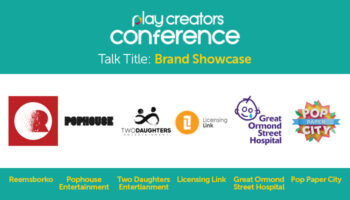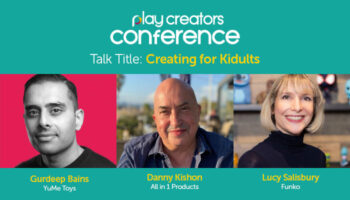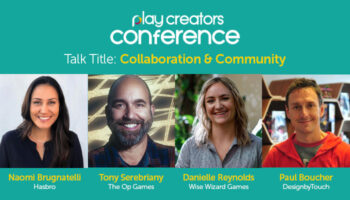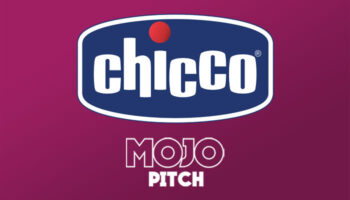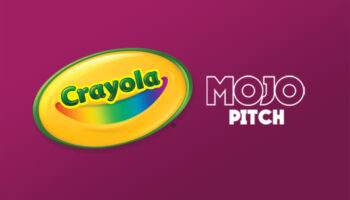Before, during, and after the pitch: Adam Hocherman, of Fat Brain Toys, on when he can be flexible

Lovely to see you, Adam. How are you settling in at Fat Brain?
Hi Deej, you as well! Things are off to great start, thanks for asking. Not that I’m surprised, but the role and company culture are a great fit. I’ve hit the ground running and the experience I’m bringing to the table appears to be just what Fat Brain needs from me. I am SO pleased!
Fantastic! So you’re not surprised it’s great, but what’s been the most pleasant surprise since you started?
I can think of two, actually. The first is my involvement with TOMY, Fat Brain’s parent company. I wasn’t anticipating a lot of day-to-day interaction with TOMY personnel but there’s plenty. So many people have reached out, and been welcoming… They’re excited about what I can bring not only to Fat Brain but also to TOMY – inventor relations in particular.
And the second?
Data. Fat Brain’s origins as a DTC eCommerce company spawned an incredible backend – a veritable smorgasbord of data and insights accessible in a click. It’s just amazing.

Sounds like something we could get lost in the weeds discussing! Meanwhile, I know you have specific requirements before you see people at a pitch. What are they? What do you tend to ask for before you meet inventors?
You know, the inventor community is good natured about this, but I know I can be a little inflexible when it comes to prepping for a pitch meeting…
In what way?
I have a database system and I like to have all the concepts loaded in there prior to a pitch. There are many reasons for this but the three that come to mind are… One, it forces the inventor to focus on how they wish to use our time together. Two, it creates a backend record that lets me and my team log notes, make comments and further propagate concepts to other internal constituents. And three, I enjoy being a bureaucrat tyrant who enjoys creating a ton of needless busywork for everyone involved.
Ha! I just presumed you needed the extra effort because you were a cut above. But no… Needless busywork, you say?!
No, I’m kidding… The real third reason is that these records are indelible. That work creates a history of what we’ve seen and when. This is important for the protection of both the inventor and the company. I’m thinking of moving it to the blockchain – and now I’m only kind of kidding!

Well, if it helps balance the scales, perhaps it’s worth saying that many inventors find your post-pitch feedback exemplary. I won’t jump ahead, though… What about during the pitch itself? Do you have a preferred structure for that?
Well, I’m really glad to hear that, Deej. On the pitch format, I think our preferred structure is pretty sundry: watch sizzle, discuss, repeat.
Watch sizzle, discuss, repeat… Why start with a sizzle?
I like to co-watch a 30-60 second sizzle first because that’s the most efficient way to communicate the concept. It frees up more time for discussion.
Makes sense. And you might recall that, before the pandemic, we discussed what inventors might want to know about what happens AFTER a pitch. Generally speaking, what’s your process?
We meet as a team, periodically, to review concepts I’ve curated. The seemingly needless busywork that the inventors invested in the portal now pays off! The sizzle’s easily accessible… The team can quickly log notes and a rating as we’re speaking, allowing me to come back to those easily for review. If someone’s out of town, I can send them a tidy link and they can do all of this on their own time. Plus, if a non-obvious fit occurs to us down the road – boom – we can access the item in a couple of clicks.

So that initial inventor effort really reduces friction later?
Exactly. The next part takes longer, though. Depending on the time of year, the line plan we’re slotting for will be in some stage of maturity. That plan will generally specify things like, “We need a new item to replace ‘Item A’ in early learners at a $9.99.” So a very fast response happens when A: the item’s clearly not a fit; B: it’s late in the process and the needs are very well defined or C: we absolutely love it and will find a place to slot it – or make one.
And a slower response?
Well, more typically an answer needs to gestate as we’re juggling multiple candidates for the same slot. So I try to balance that need with the inventor’s very reasonable need to get closure on an item that’s been presented.
Closure… I don’t think I’ve heard that word used in this context before, but I think that’s excellent. That’s exactly what it feels like inventors need. Okay! Adam, how important is clear communication in what you do?
It’s SO important – and I’ve really tried to make this a mainstay of working with me.
It doesn’t end with clear communication, though, does it? I mean… If I pitched you an idea, and you came back and said, “This is dreadful. It’s old fashioned and unoriginal; it sucks. Also, I have serious concerns about your sense of humour…”
Would I say that to you, Deej?!

Well, maybe not. Maybe this is feedback for Bill! Either way, you’d certainly be communicating CLEARLY… But not very empathetically! And in my experience, you DO communicate with empathy. So my question is this: how important is that empathy? And from where does it come?
To be candid, sometimes it’s difficult to articulate the reasons for a “pass.” Sometimes it’s difficult because we just don’t know…
You don’t know why you’re passing?
Right; we don’t exactly “know” why we’re passing! The item just doesn’t “feel right” for us. Other times – to your point – the item simply isn’t very original or creative, and it’s harder to communicate that – especially to a non-pro inventor. More generally, much like my experience as a parent, it’s a matter of time.
In what way?
I resist taking more meetings than I can handle with the level of empathy that I wish to sustain. Inventors are mad if they can’t get a meeting, but the reason is that the time’s being devoted to more thoughtful responses once they’re “in.” You ever meet one of those people who you know is pulled in a lot of directions, but when you’re with them you know you have their full attention? That’s how I want to be perceived. I could take twice the number of meetings and then go dark, or provide one-word replies, but that’s not who I am.

Oh, great answer. Great! And after an inventor pitches successfully, how closely do you work with them to develop their idea?
That depends on the item and the inventor. As you know, everything in retail has gotten more competitive and this extends to the inventor community. Ideation is a skill, and there are inventors that do just that well. But today, in addition to more polished and more informative sizzles, we’re being presented with sophisticated proofs of concept and even packaging comps.
So there might be an stronger sense of direction inherent in some of the early ideas?
Right. And while we may use some of that, or none at all, it tends to get the mind whirring, and signals to us that the inventor is capable. I think for an inventor, the number one asset is being easy to work with – and from a pitch and pass perspective, your readers can see Elliot Ruddell’s brilliant insights on this in a recent Mojo piece. But a close second to that is being available to provide value-added services if called upon.
Fantastic. And we’ll put in a link to Elliot’s piece there because you’re quite right; great insights. Thank you. Finally then, Adam – despite doing a few different Mojo interviews, we appear not to have asked you this… What’s the most interesting thing in your office or on your desk?
Hmmm, actually you have asked me that, and at that time I had a great answer – the GoCube!

Oh, then please forgive me! My memory went with my hair!
It was a while ago! In any case, I recently did some spring cleaning and my desk is a bit bare. Today, I think I’d have to say the new iMac that Fat Brain provided me. This is the 24” model with the Apple silicon. I’m an Apple person but even by Apple standards, it’s hands-down the best computer I’ve ever worked on. Just a joy.
Well, it’s a good answer! Adam: a pleasure, always. I’m looking forward to seeing you in September.
Really looking forward to that!
–
To stay in the loop with the latest news, interviews and features from the world of toy and game design, sign up to our weekly newsletter here



